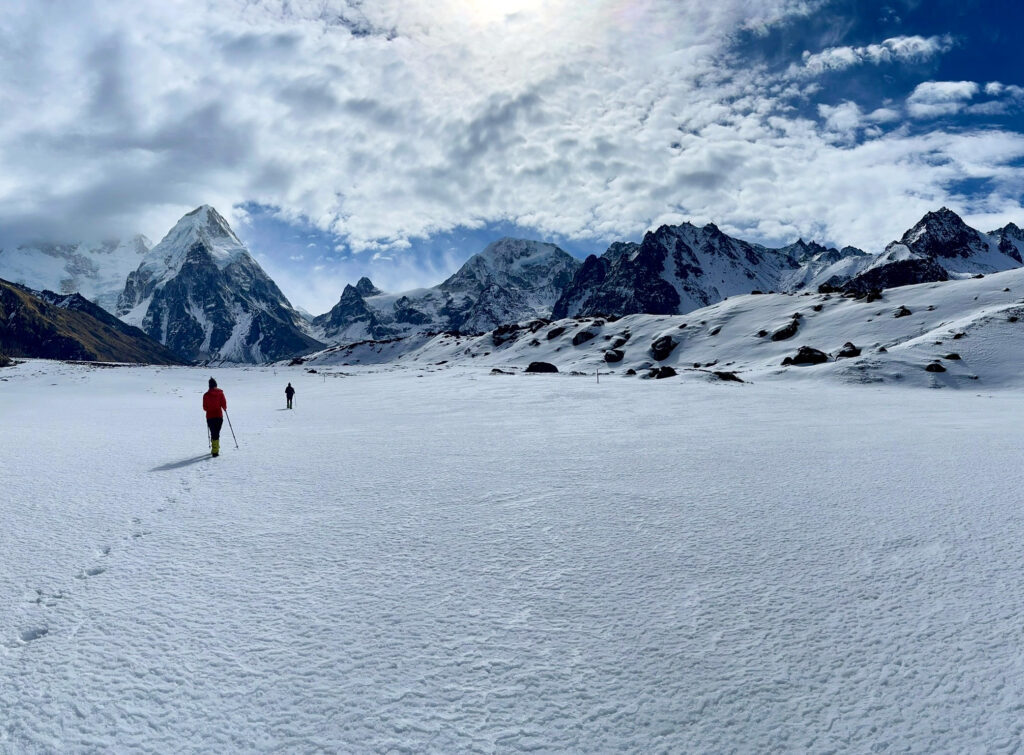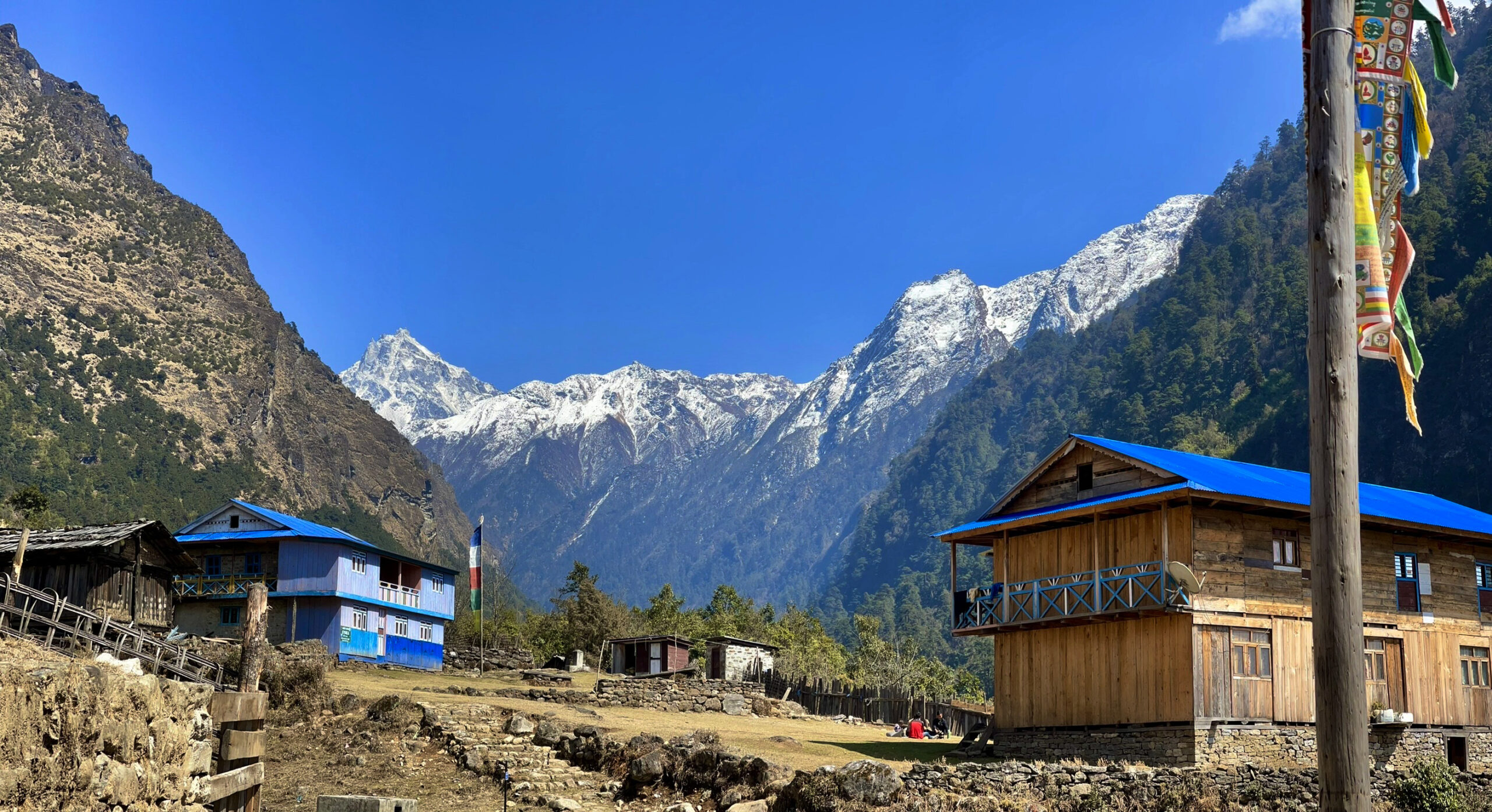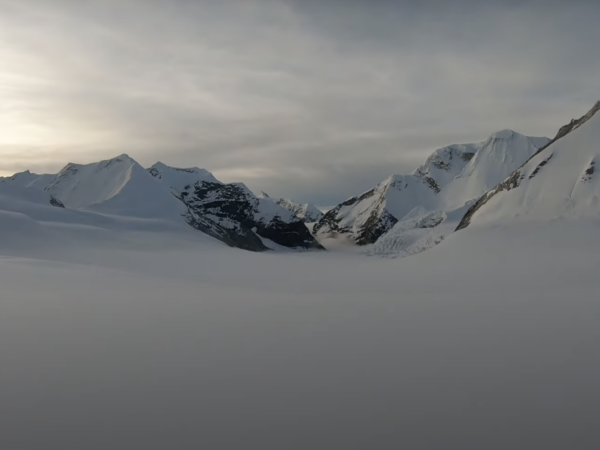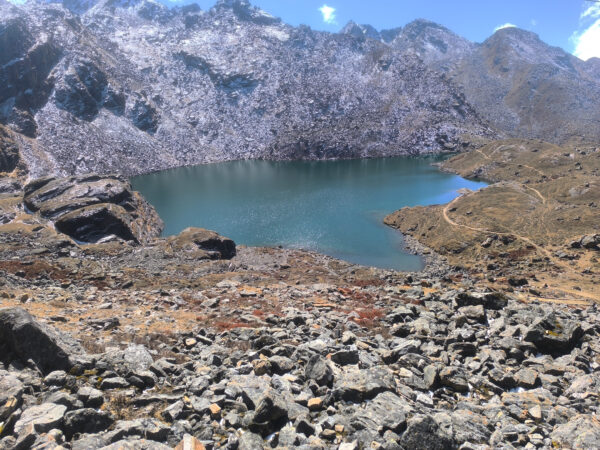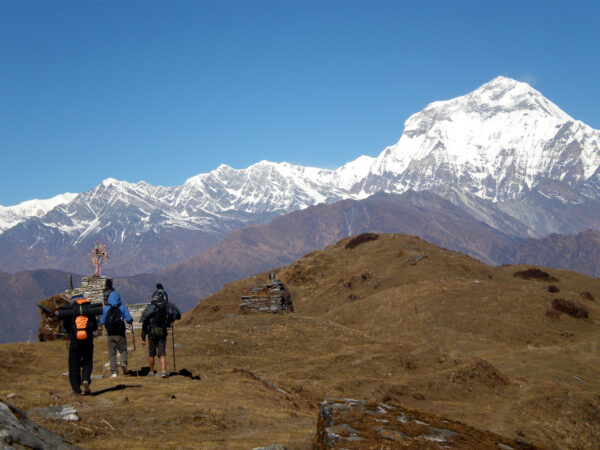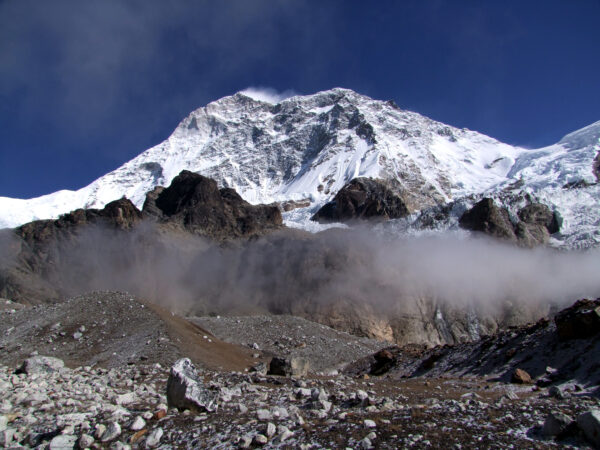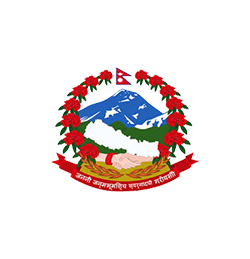Highlights
- Discover the serene and less-explored eastern mountain regions of Nepal.
- Stroll by the renowned glacial lakes in the area.
- Enjoy the diverse flora and fauna throughout your trek.
- Take some time to meditate at the peaceful Ramtang and Oktang Monasteries after your long walks.
- Experience the awe-inspiring beauty of towering peaks, feeling their grandeur up close.
Overview
The Kanchenjunga Circuit Trek is a breathtaking and remote trekking experience in eastern Nepal, offering stunning views of the Kanchenjunga Massif, the world’s third-highest peak. This challenging trek takes you through diverse landscapes, including glaciers, alpine meadows, dense forests, and high mountain passes, while providing a glimpse into the rich culture of local communities such as the Sherpas, Rais, and Limbus.
With its rugged terrain and high-altitude trails, the trek is ideal for experienced adventurers seeking an off-the-beaten-path journey. Highlights include spectacular panoramic mountain views, glacial valleys, and serene Himalayan villages, making it a truly unforgettable experience.
Best Time for the Kanchenjunga Circuit Trek
The Kanchenjunga Circuit Trek is an adventure that can be undertaken throughout the year, but choosing the right season plays a crucial role in the overall experience. Since much of the trek takes place at high altitudes, certain times of the year present more challenges than others. Each season, however, brings its own unique charm, offering different perspectives of the breathtaking landscapes along the route.
Spring (March, April, May)
Spring is one of the most ideal seasons for trekking in the Kanchenjunga region, as it brings clear blue skies, blooming rhododendrons, and vibrant landscapes. The weather is generally stable, allowing for unobstructed mountain views and comfortable trekking conditions. As winter fades, melting snow revives rivers and waterfalls, while forests burst into life with lush greenery and colorful flowers.
This season also offers a higher chance of encountering wildlife, as reduced vegetation in the forests improves visibility. Trekkers may spot musk deer, Himalayan monals, red pandas, and blue sheep along the way. Additionally, this time of year coincides with several cultural festivals, such as Holi, Nepali New Year, and Buddha Jayanti, adding a cultural dimension to the trek.
Autumn (September, October, November)
Following the monsoon season, autumn is another excellent time for trekking, offering stable weather, crystal-clear views, and comfortable temperatures. The air feels fresh, and the trails are dry, making for an enjoyable and safe trekking experience. The post-monsoon clarity enhances the panoramic views of Kanchenjunga and surrounding peaks, making it a photographer’s paradise.
Autumn also brings rich hues of yellow, crimson, and orange, giving the landscape a striking contrast against the snow-capped peaks. Culturally, this is a festive season in Nepal, with major celebrations such as Dashain and Tihar, allowing trekkers to experience local traditions and hospitality.
Winter (December, January, February)
Winter transforms the Kanchenjunga region into a snow-covered wonderland, offering breathtaking scenery but posing significant challenges. Heavy snowfall and extreme cold make the trek more demanding, and some routes at higher altitudes may become impassable. The temperature can drop as low as -20°C, requiring trekkers to be well-prepared with proper gear and experience in harsh winter conditions.
While winter trekking is not recommended for most, those who are well-equipped and experienced in extreme conditions can enjoy a serene, crowd-free adventure under starry skies with spectacular views of glaciers and snow-laden landscapes. However, alternative lower-altitude treks, such as the Langtang Valley Trek or Annapurna Base Camp Trek, may be better suited for this season.
Summer/Monsoon (June, July, August)
The monsoon season brings heavy rainfall, slippery trails, and an increased risk of landslides, making trekking in the Kanchenjunga region extremely challenging. Persistent rain often leads to obstructed mountain views and difficult navigation.
Accommodation During Kanchenjunga Circuit Trek
Accommodation on the Kanchenjunga Circuit Trek is simple but sufficient. Teahouses and basic lodges are available in most villages, offering twin-sharing rooms with basic bedding. Some higher-altitude areas may require camping, as lodges are limited.
Teahouses provide meals, electricity, and sometimes internet, but hot showers and charging devices may cost extra. Running water is available, but drinking water should be purified.
In Kathmandu, you can choose from a variety of hotels based on your preference and budget. Most trek packages do not include accommodation in the city.
Physical Fitness & Preparation for the Kanchenjunga Circuit Trek
The Kanchenjunga Circuit Trek is one of Nepal’s most challenging trekking routes, demanding both physical stamina and mental resilience. Each day involves long hours of trekking, navigating steep ascents and descents on rugged trails. As you climb higher, the air gets thinner, and the cold temperatures can add to the challenge. Without proper fitness, this trek can feel overwhelming.
To fully enjoy this rewarding adventure, it’s essential to prepare in advance. The Kanchenjunga region has minimal modern amenities, meaning you’ll be staying in basic teahouses where even small conveniences like hot showers, WiFi, charging, and drinking water come at an extra cost.
How to Train for the Kanchenjunga Circuit Trek?
To get ready for this trek, focus on cardiovascular fitness, strength training, and endurance-building exercises. Here’s what you can do:
- Cardio Workouts – Running, jogging, swimming, cycling, and stair climbing help improve lung capacity.
- Strength Training – Squats, lunges, and core workouts will build leg and body strength for uphill climbs.
- Short Treks & Hikes – Practicing on uneven terrain will help you adapt to the real trekking conditions.
A well-prepared trekker will enjoy the journey much more and adapt better to the high-altitude conditions.
Can the Kanchenjunga Circuit Trek Be Done in Less Than 18 Days?
Yes, it is possible to complete the trek in a shorter duration by adjusting the itinerary:
- 13 Days – Fly directly to Suketar (Taplejung) and start the trek from there, skipping the lower trail.
- Less than 10 Days – If you trek only to Kanchenjunga South Base Camp, you can shorten the journey since a road extends up to Yamphudin.
However, a faster trek means less time for acclimatization, which increases the risk of altitude sickness. For a safe and enjoyable experience, we recommend the standard 18-day itinerary.
Outline Itinerary:
Day 1: Arrival in Kathmandu (1,400m)
Day 2: Trek permit preparation and sightseeing in Kathmandu
Day 3: Fly from Kathmandu (1,400m) to Bhadrapur (91m)
Day 4: Drive from Bhadrapur (91m) to Taplejung (1,820m)
Day 5: Drive from Taplejung (1,820m) to Sekathum (1,650m)
Day 6: Trek from Sekathum (1,650m) to Amjilasa (2,498m)
Day 7: Trek from Amjilasa (2,498m) to Gyabla (2,725m)
Day 8: Trek from Gyabla (2,725m) to Ghunsa (3,415m)
Day 9: Acclimatization day in Ghunsa (Hike to Ghunsa Ree)
Day 10: Trek from Ghunsa (3,415m) to Kambachen (4,145m)
Day 11: Trek from Kambachen (4,145m) to Lhonak (4,792m)
Day 12: Trek from Lhonak (4,792m) to Kanchenjunga North Base Camp (5,143m)
Day 13: Trek back from Lhonak (4,792m) to Ghunsa (3,415m)
Day 14: Trek from Ghunsa (3,415m) to Sele La Camp (4,240m)
Day 15: Trek from Sele La Camp (4,240m) to Cheram (3,868m)
Day 16: Trek from Cheram (3,868m) to Ramche (4,580m)
Day 17: Hike to Oktang Viewpoint (4,730m) and return to Ramche
Day 18: Trek from Ramche (4,580m) to Tortang (2,995m)
Day 19: Trek from Tortang (2,995m) to Sekathum (1,576m)
Day 20: Drive from Sekathum to Ilam
Day 21: Drive from Ilam to Bhadrapur, then fly to Kathmandu
Day 22: Final departure.
Why Choose Everest Hikes for the Kanchenjunga Circuit Trek?
Everest Hikes is the perfect choice for the Kanchenjunga Circuit Trek because of its deep expertise, personalized service, and commitment to responsible trekking. With experienced local guides who have extensive knowledge of the region’s trails, culture, and high-altitude trekking, they ensure a safe and enriching journey. The company focuses on small group sizes to provide an intimate and flexible trekking experience, allowing trekkers to fully immerse themselves in the breathtaking landscapes and remote villages. Everest Hikes also prioritizes eco-friendly practices and supports local communities by promoting homestay accommodations and employing local porters. Their well-organized itineraries include proper acclimatization and logistics, ensuring a smooth and enjoyable trek through one of Nepal’s most pristine and less-explored trekking routes. With Everest Hikes, you not only conquer the Kanchenjunga Circuit but also create lifelong memories in the heart of the Himalayas.
Kanchenjunga Circuit Trek – 22 Days - Itinerary
Arrival in Kathmandu - 1,300m
Upon your arrival at Tribhuvan International Airport, our airport representative will greet you. A private tourist vehicle will be arranged for your transfer to the hotel. You can either relax at your hotel
Trek permit preparation and sightseeing in Kathmandu
After breakfast, you will meet your trek leader at your accommodation. A pre-trip meeting will be held, where you will receive important information about the Kanchenjunga Circuit Trek. Please ensure you bring a copy of your travel insurance, three passport-sized photos, and your passport. You’ll have free time to relax or shop, and if you wish, we can arrange a tour of one of Kathmandu’s UNESCO World Heritage sites, such as Swayambhu, Boudha, Pashupatinath, or Kathmandu Durbar Square.
Fly from Kathmandu - 1,400m to Bhadrapur - 91m
After an early breakfast, you will be transferred from your accommodation to the domestic terminal of Kathmandu Airport to board the earliest flight to Bhadrapur. The flight takes approximately 45 minutes to reach the easternmost region of Nepal. Upon arrival in Bhadrapur, you will be transferred to your hotel to relax and prepare for your adventure the following day.
Drive from Bhadrapur - 91m to Taplejung -1,820m
Today, you will travel through Kanyam in a local jeep. As you drive along the Mechi Highway toward Taplejung, the starting point of the Kanchenjunga Circuit trek, you'll pass by scenic tea plantations. The journey offers serene views of the tea and cardamom fields, with glimpses of Mt. Kanchenjunga and Mt. Jannu peeking through the slopes and high passes. After crossing pastureland and a few small villages, you will arrive in Taplejung. You’ll have time to rest at your hotel and prepare for the exciting adventure ahead.
Drive from Taplejung - 1,820m to Sekathum - 1,650m
After breakfast, you will board a local jeep for Sekathum, your destination for the day. While most trekkers travel from Taplejung to Sekathum on foot, you’ll take a shorter route and benefit from local services, arriving two days ahead of other hikers. The journey will take you along the Tamor River, passing through villages such as Mitlung, Chirwa, Thapethok, Lelep, and more. At the Kanchenjunga National Park entry point along the road, your permits will be checked, and you will be cleared to continue on to Sekathum.
Trek from Sekathum - 1,650m to Amjilasa - 2,498m
After a hearty breakfast at Sekathum, your trekking adventure will finally begin, following two days of travel. The exciting journey through the Himalayas starts with an ascent along the Ghunsa Khola. You'll cross several bridges, walk through vibrant forests, and explore small villages like Jonggim and Ghaiyabari, eventually reaching Amjilosa.
Trek from Amjilasa - 2,498m to Gyabla - 2,725m
After breakfast, you will depart from Amjilosa and continue your trek toward Gyabla, also known as Kyapra. The path will take you through dense forests and areas with little human presence. If you're fortunate, you may catch a glimpse of Red Pandas along the Kanchenjunga Trail. As you ascend, you’ll be treated to breathtaking mountain views and pass several waterfalls. By the time you reach Gyabla village, you will have completed a leisurely pace of the journey.
Trek from Gyabla - 2,725m to Ghunsa - 3,415m
Today, you will begin your trek from Gyabla, heading toward Ghunsa. As you make your way to the Phale settlement, you'll walk through forests rich with diverse flora and wildlife. By maintaining a steady pace, you'll reach Ghunsa village, where you'll spend the night.
Acclimatization day in Ghunsa (Hike to Ghunsa Ree)
Today is essential for altitude acclimatization, allowing your body to adjust to the higher elevations and helping to prevent altitude sickness. You have the option to hike up to the glacier at Ghunsa Ree or head toward Selele La Pass’s Chherpuk Kharka. Along the way to Lobsang La Pass, you can also hike to a viewpoint above the monastery. From the summit of Lobsang La Pass, you'll be rewarded with spectacular views of Phale, Ghunsa, Selele La, Ghunsa Peak, and several other unnamed peaks.
Trek from Ghunsa - 3,415m to Kambachen - 4,145m
The trail gradually ascends on the eastern side of the Ghunsa River, passing meadows adorned with wildflowers and beautiful pine and rhododendron forests. As you move forward, you’ll reach Rampuk Kharka, a grassy area with a teahouse where you can take a short rest. The path continues upward before leveling out after crossing a waterfall and a bridge. However, be cautious as you will need to navigate an active landslide zone. Once you’ve safely passed this area, you’ll be greeted by the majestic view of Mt. Jannu (Kumbhakarna) in all its glory. Soon after, the route will lead you down to Khambachen, a peaceful Tibetan village nestled in a grassy plain, surrounded by stunning mountain scenery.
Trek from Kambachen - 4,145m to Lhonak - 4,792m
Today will be challenging as you navigate steep, rocky terrain and hazardous mountain paths. After crossing a waterfall, you'll reach Ramtang, a temporary yak herders' camp. Along the way, you’ll enjoy views of Yalung Kang and the Kangbachen Himal. Upon crossing a bridge, you will arrive at Ramtang Monastery, then proceed carefully through a landslide zone, remaining cautious of falling rocks. Afterward, you'll descend to the river and continue your trek until you reach Lhonak.
Trek from Lhonak - 4,792m to Kanchenjunga North Base Camp - 5,143m
Extra caution is necessary when walking on rocky, hilly terrain due to the possibility of landslides. As you trek, you will pass several massive glaciers and enjoy breathtaking views of the peaks of Mt. Kanchenjunga, Mt. Pathivara, Mt. Yalung Kang, Nepal Peak, Twin Peak, Tent Peak, and others. After about three hours of hiking, you will reach Jorkin at 5021 meters, where you can observe various wildlife, including blue sheep and numerous bird species.
Continuing along the steep, rugged path, you will eventually arrive at Pangpema, the North Base Camp of Kanchenjunga. From here, you will be treated to magnificent views of Kanchenjunga, Chang Himal, Jannu Himal, Nepal Peak, and many other peaks in the Tibet Himalayas. At Pangpema, a small stone cabin that serves as a tea house is open to trekkers during the peak season. You will spend some time at the Base Camp before returning to Lonak for the night.
Trek back from Lhonak - 4,792m to Ghunsa - 3,415m
Following the Ghunsa River, you will retrace your steps, passing through Khambachen and descending to Ghunsa. Along the way, you’ll pass the monastery and the herders' camp at Ramtang, all while enjoying sweeping views of the Himalayan ranges. As you continue down the valley on the same path you took during the ascent, you’ll eventually reach Ghunsa, a Tibetan-influenced settlement, where you will spend the night.
Trek from Ghunsa - 3,415m to Sele La Camp - 4,240m
As you leave the trail to Gyabla behind, you will make your way toward Sele La. While trekking through dense forests, there’s a chance you may encounter snow leopards. The area is sparsely populated, with only a few remote communities that operate teahouses during the peak hiking season. Due to heavy snowfall, there may be no alternative route to the South Base Camp until you reach Sekathum. If the teahouses are closed but the passes are still accessible, you might be able to reach Tseram in a single day, potentially shortening your original itinerary by a day.
Trek from Sele La Camp - 4,240m to Cheram - 3,868m
Today will be a long and challenging day as you cross three passes before reaching Cheram. After breakfast, you will depart from Sele La and begin your uphill trek, with stunning southern views of Mt. Jannu and Mt. Makalu. The path leads you along the mountainside, followed by a brief but steep climb to the first pass, Sinion La.
The route then descends slightly before turning upward again to the summit of Sinelapche La Pass. From the summits of all three passes, you’ll enjoy breathtaking views of the surrounding Himalayan peaks. After crossing the passes, you will descend a steep trail past a small lake and reach an area with yak pastures and roofed huts. The charming village of Cheram, situated above the Simbua River, will be your stop for the night.
Trek from Cheram - 3,868m to Ramche - 4,580m
A moderate ascent of about an hour and a half will take you to Yalung Glacier, also known as Kanchenjunga South Glacier. The second half of the trek takes you through grassy meadows, passing the Simbua River and Lapsang Village before reaching Ramche. In this settlement, you'll find a lake, a meadow, two stone houses, and the occasional sight of yaks and blue sheep grazing on the hills above. As you pass pristine streams and a frozen lake, you'll be treated to stunning views of Mts. Kokthan, Rathong, and Kabru, which will add to the excitement of today’s hike.
Hike to Oktang Viewpoint - 4,730m and return to Ramche
On this day, the Kanchenjunga Circuit trek will take you to the breathtaking Oktang Base Camp. As you journey across the valley, you'll be surrounded by pristine natural landscapes. This section of the trek involves crossing several lateral moraines while following the Yalung Glacier. After a challenging climb, you'll reach Oktang Base Camp, where you can explore the area and capture stunning photos. Afterward, you'll head back to Ramche to spend the night at a local teahouse.
Trek from Ramche - 4,580m to Tortang - 2,995m
The day’s journey begins with a gradual descent through shaded juniper and rhododendron forests, all while enjoying breathtaking views of Jannu Himal. The trail can be tricky in places, with rocky sections and loose dirt, so caution is necessary. Along the way, you’ll pass several Mani walls and colorful prayer flags fluttering in the woods. After crossing the Simbua River and traveling through forested areas, you will reach Tortong to conclude the day’s trek.
Trek from Tortang - 2,995m to Sekathum -1,576m
After breakfast, you will begin your trek from Tortang to Sekathum. As you follow the Simbuwa Khola, you’ll be accompanied by stunning views of peaks such as Semethulung Danda and Chanjalung Danda. Upon reaching Hellok, you will cross several suspension bridges while descending toward Sekathum. You’ll spend the night at Sekathum, resting after the day’s journey.
Drive from Sekathum to Ilam
Your trekking portion of the Kanchenjunga Circuit Trek concludes at Sekathum. Depending on your preference for Illam or Taplejung, you can take a jeep from Sekathum to either location, considering the distance and other factors. Along the way, you’ll pass through several towns, including Lelep, Temewa, Chiruwa, Sinwa, and Mitlung, before reaching Taplejung. You can choose to spend the night there or continue your journey toward Illam, depending on your plans.
Drive from Ilam to Bhadrapur, then fly to Kathmandu
Your Kanchenjunga Circuit Trek adventure concludes today. After traveling by local transport from Illam to Bhadrapur, you will catch a flight to Kathmandu, Nepal's capital. Once in Kathmandu, you'll have free time to explore areas like the Ason and Thamel markets, and other local spots. It’s a great opportunity to pick up souvenirs for your loved ones back home. In the evening, join the Green Valley Nepal Trek team for a farewell dinner to celebrate the successful completion of this remarkable trek.
Final Departure.
Our team at Everest Hikes will accompany you to the airport for your return flight
Inclusions
What's included
- International and Domestics Airport pick up and drop
- Standard Hotel accommodation in Kathmandu (breakfast included)
- Tea house accommodation (twin-shared basis) in the trek
- Meals (Breakfast, Lunch, and Dinner) Tea ,Coffee during the trek
- Kathmandu to Taplejubg suketar airport Both ways
- A professional trekking guide
- A porter (carry up to 20kg ) - 1 porter for every 2 trekkers
- Meals, Accommodation, Travel Insurance etc for all our staffs during the trek
- All required permits Kanchenjunga special permits and Kanchenjunga Conversation area
- Basic medical kits
- A trekking map
- A duffel bag to carry all your belongings (should be returned after the trek)
- All Government taxes and VAT
- Farewell dinner
- Everest Hikes T-shirt
What's not included
- International AirfaresTravel Insurance
- Nepal Visa fee
- Lunch and Dinner in Kathmandu
- Tips for Guide , Porter
- Personal nature expenses (Drinks and beverage – bottled water / hot water / alcohol )
- Hot shower etc. which are not mentioned in inclusion
- Wi-Fi And Battery charge
- Personal insurance and Medical Insurance
Equipment
Recommended Trekking Gears
Clothing
Base Layers (Moisture-Wicking)
- Thermal tops and bottoms (polyester or merino wool)
- Lightweight long-sleeve shirts
Insulating Layers
- Fleece jacket or pullover
- Down jacket (for high-altitude treks)
- Warm sweaters
Outer Layers (Shells)
- Waterproof and windproof jacket (Gore-Tex or similar)
- Waterproof pants
Trekking Pants
- Quick-dry pants
- Convertible hiking pants (zip-off into shorts)
Trekking Shirts
- Lightweight and breathable T-shirts
- Long-sleeve shirts with UV protection
Headwear
- Wide-brim hat or cap for sun protection
- Warm beanie for cold temperatures
- Buff or scarf for dust and wind
Gloves
- Lightweight trekking gloves
- Insulated gloves for higher altitudes
Socks
- Moisture-wicking trekking socks
- Thermal socks for colder regions
Footwear
- Sturdy and waterproof trekking boots (well broken-in)
- Comfortable sandals or camp shoes (for evenings/rest days)
- Gaiters (optional, for snow or muddy trails)
Backpacks & Bags
Backpack
- 40-50L capacity for multi-day treks
- Comfortable straps and rain cover
Daypack
- 20-30L for short treks or carrying essentials during the day
Duffel Bag
- Used if porters are carrying your gear (for organized treks)
- Dry Bags
- To keep electronics and clothes dry in wet conditions
Sleeping Gear
Sleeping Bag
- 4-season sleeping bag (rated for -10°C to -20°C for high-altitude treks)
- Sleeping bag liner (optional, for extra warmth and hygiene)
Sleeping Pad (if camping)
- Lightweight and inflatable or foam pads for comfort
Trekking Accessories
Trekking Poles
- Adjustable and lightweight poles (essential for steep ascents/descents)
Water Bottle/Hydration System
- Insulated bottle (to prevent freezing at high altitudes)
- CamelBak or similar hydration reservoir
Water Purification
- Water filters, purification tablets, or UV sterilizers
Sunglasses
- UV protection (Category 3 or 4 for snowy conditions)
Headlamp
- With spare batteries (essential for early morning or late-night treks)
Multi-tool or Knife
- For various small tasks
First Aid Kit
- Bandages, blister patches, antiseptic wipes, painkillers, Diamox (for altitude sickness), etc.
- Lip Balm: SPF-protected to prevent chapping
- Sunscreen: High SPF for UV protection at higher altitudes
Personal Toiletries
- Biodegradable soap, toothpaste, toothbrush, quick-dry towel, wet wipes, and toilet paper
Optional but Useful Items
Camera
- To capture the stunning scenery (extra batteries and memory cards are a must)
Snacks
- Energy bars, trail mix, or chocolate for quick energy boosts
Power Bank/Solar Charger
- For charging devices in remote areas
Books or E-Readers
- For downtime during rest days
Earplugs
- To block out noise in lodges or camps
Notebook/Journal
- To record your trek experience
Clothing Packing Tips
- Layering is key: It helps regulate your body temperature and adapt to changing weather.
- Avoid cotton: It retains moisture and dries slowly, which can lead to discomfort or hypothermia.
- Pack light: Only carry what is absolutely necessary to avoid unnecessary weight.
Gear Rentals in Nepal
If you're worried about carrying too much gear, trekking hubs like Kathmandu and Pokhara offer trekking equipment rentals and sales. You can find items like sleeping bags, down jackets, and trekking poles at reasonable prices. However, ensure you check the quality before renting.

